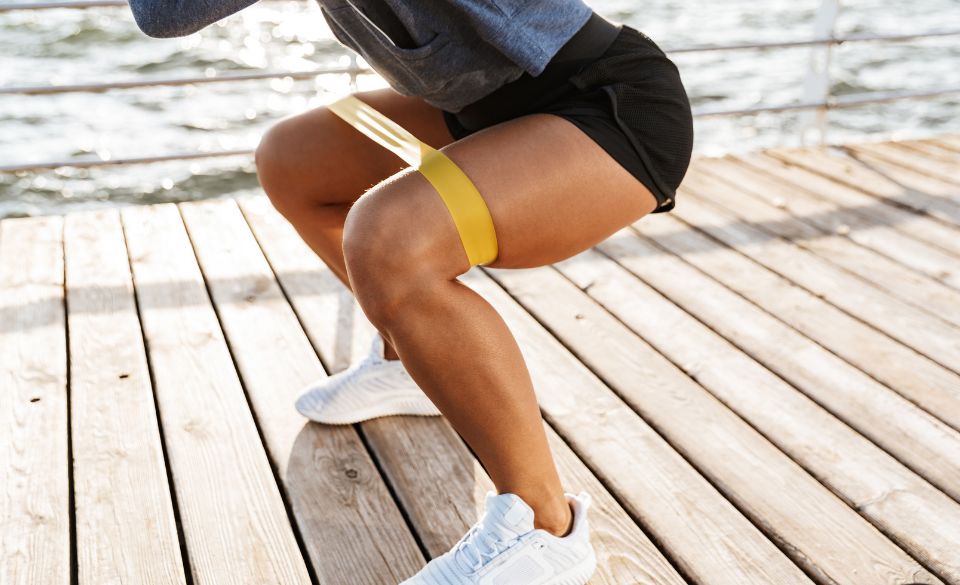
Exploring the Benefits of the Kickback Squat: A Comprehensive Guide
Page Contents
The kickback squat is a popular lower body exercise that primarily targets the glutes and hamstrings while also engaging the quads and core muscles. It’s an effective compound movement that can be performed with or without weights, making it a versatile exercise for people of all fitness levels. In this article, we will delve deeper into the benefits of the kickback squat, how to perform it correctly, and some studies supporting its effectiveness.
Understanding the Kickback Squat
The kickback squat is essentially a variation of the traditional squat, but with a twist. In this exercise, you extend your leg backward as you rise from the squatting position, thus kicking back your leg. This kicking motion activates the glutes and hamstrings, making it an effective exercise for strengthening and toning the lower body.
What Muscles Does Squat Kickback Work?
The squat kickback is an exercise that primarily targets the glutes and hamstrings, but also engages the quads and core muscles. The kicking motion involved in the exercise activates the glutes and hamstrings more effectively than traditional squats, resulting in a firmer and shapelier lower body.
The glutes are the largest muscle group in the lower body and are responsible for hip extension, rotation, and abduction. They play a crucial role in everyday activities such as walking, running, and jumping. The hamstrings are located on the back of the thigh and are responsible for knee flexion and hip extension.
During the squat kickback, the glutes and hamstrings work together to lift the body from the squatting position while also kicking back the leg. This kicking motion activates the glutes and hamstrings to a greater extent than traditional squats, resulting in increased muscle activation and strength.
In addition to the glutes and hamstrings, the quads and core muscles are also engaged during the exercise. The quads are located on the front of the thigh and are responsible for knee extension, while the core muscles provide stability and support to the spine and pelvis.
Performing the Kickback Squat
To perform the kickback squat, follow these steps:
1. Stand with your feet shoulder-width apart and toes pointed slightly outward.
2. Lower your body into a squatting position by bending your knees and pushing your hips back.
3. As you rise from the squatting position, extend your right leg back, kicking it behind you.
4. Return to the starting position and repeat with the left leg.
5. Continue alternating legs for the desired number of repetitions.
Remember to keep your back straight, core engaged, and knees aligned with your toes throughout the exercise. You can perform this exercise with or without weights, depending on your fitness level and goals.
Benefits of the Kickback Squat
The kickback squat is a popular exercise that provides numerous benefits for the lower body, making it a valuable addition to any fitness routine. Here are some of the benefits of the kickback squat:
Builds lower body strength: The kickback squat targets the glutes and hamstrings more effectively than traditional squats, resulting in increased muscle activation and strength. Stronger glutes and hamstrings can improve posture, balance, and overall lower body function.
Tones and shapes the lower body: The kicking motion involved in the exercise helps to firm and shape the glutes and hamstrings, resulting in a more toned and sculpted lower body.
Improves balance and stability: The kickback squat requires you to maintain your balance while kicking back your leg, thus improving your balance and stability. This can translate to improved performance in other physical activities such as sports and dance.
Increases calorie burn: The kickback squat is a compound movement that engages multiple muscle groups, resulting in increased calorie burn and improved cardiovascular health.
Reduces the risk of injury: The kickback squat strengthens the muscles that support the hips and lower back, reducing the risk of injury during physical activities.
Enhances athletic performance: The kickback squat can improve explosiveness and power in the lower body, making it an effective exercise for athletes looking to enhance their performance in sports such as sprinting, jumping, and dancing.
Versatile exercise: The kickback squat can be performed with or without weights, making it a versatile exercise for people of all fitness levels. It can also be modified to target different areas of the lower body by changing the width of the stance or the angle of the kicking motion.
Studies Supporting the Effectiveness of the Kickback Squat
A study conducted by the University of Wisconsin-La Crosse compared the muscle activation of the glutes and hamstrings during traditional squats and kickback squats. The results showed that the kickback squat activated the glutes and hamstrings to a greater extent than traditional squats, thus making it a more effective exercise for strengthening and toning the lower body.
Another study published in the Journal of Strength and Conditioning Research found that adding a resistance band to the kickback squat increased the activation of the glutes and hamstrings even further, thus making it an even more effective exercise for building lower body strength and power.
Final Words
The kickback squat is a powerful lower body exercise that offers numerous benefits, including increased muscle strength and tone, improved balance and stability, increased calorie burn, and reduced risk of injury. Incorporating this exercise into your fitness routine can help you achieve your fitness goals faster and more effectively.


